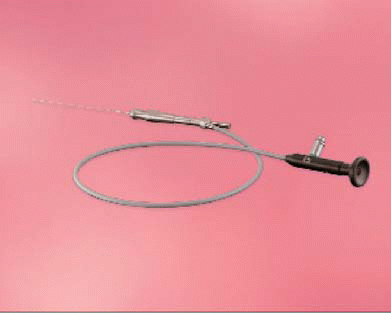There are many advantages of this procedure over sialadenectomy, noted Dr. Schaitkin: no scar; elimination of facial nerve paralysis of the marginal mandibular branch; and lower morbidity, especially for older patients with co-occurring disorders. (Because sialendoscopy is performed on an outpatient basis, older patients can be maintained on their anticoagulant therapies.) Since the use of sialendoscopy began in Geneva 12 years ago, the submandibular resection rate has dropped by 80%, Dr. Marchal reported.
Explore This Issue
June 2008
Learning Curve
Sources interviewed for this article emphasized that training basics should include a formal course. It would be a great mistake to buy an endoscope and start, said Dr. Marchal. I can cite many examples of people having done that, and then having problems. It’s not that it’s so complicated, but there are so many little tricks.
At the European Sialendoscopy Training Centre (ESTC) in Geneva, where 480 physicians from 43 countries have been trained since 2002, surgeons first practice the technique on fresh pigs’ heads to master the instrumentation and navigation in the duct. (For more information, go to www.sialendoscopy.net/.)
David W. Eisele, MD, Professor and Chairman of the Department of Otolaryngology-Head and Neck Surgery at the University of California, San Francisco, whose primary practice is in head and neck cancer, has achieved good results since adding sialendoscopy to his armamentarium following the course in Geneva.5 At UCSF (www.ucsf.edu ), Dr. Eisele performs sialendoscopy under general anesthesia in the operating room. He believes that once surgeons master the technique in a course setting, it’s pretty easy to translate those skills into the operating room. However, he said, when you’re in the operating room, you must be prepared to deploy other options-for instance, in some patients, it may be too difficult to dilate the opening to insert the scope. A sialodochotomy may be required for insertion of the scope. (Dr. Marchal has also published descriptions of his combined endoscopic and external approach for extracting large stones.7)
Dr. Schaitkin agreed that the most difficult part of the learning curve is inserting the scope. (Other authors have described some new technical tricks.8) The papillae of the ducts are so very small. Even though the scopes you are inserting are 1.3 to 1.6 mm-and that sounds tiny-you still have to dilate the opening to be able to accept that instrument. The first 20 cases are difficult, and it gets easier after that.
Leave a Reply